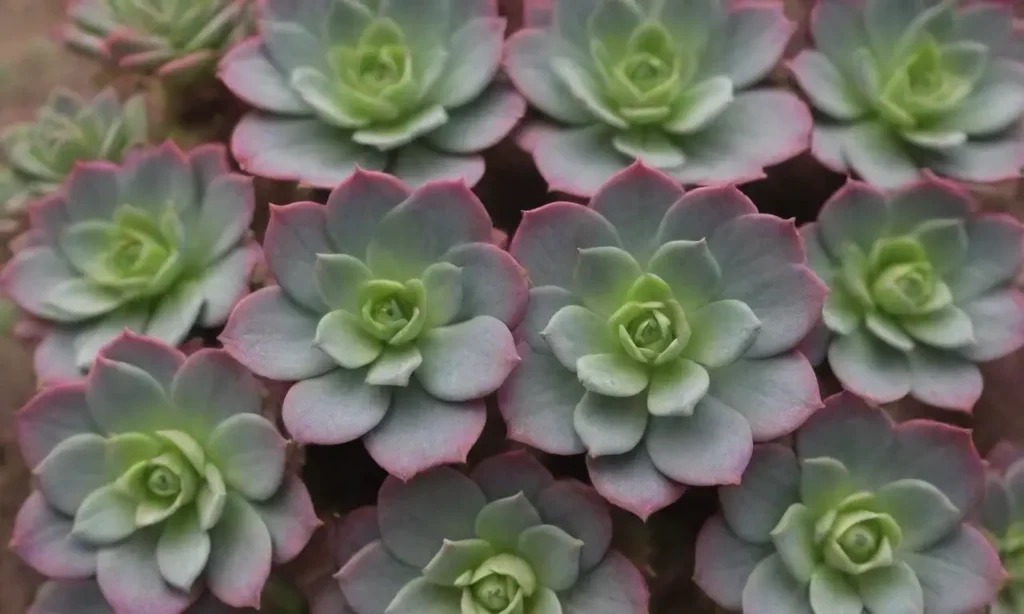
44. Propagation Challenges: Why Some Flowering Succulents Resist

Introduction
Propagation of plants, especially succulents, can often be a rewarding yet perplexing venture. Succulents are celebrated not only for their diverse shapes and striking colors but also for their generally hardy nature. However, when it comes to propagation, some flowering succulents present unique challenges that may frustrate even seasoned plant enthusiasts. Understanding these challenges is essential for those looking to expand their succulent collections or cultivate their favorites successfully.
In this article, we will delve into the intriguing and often complicated world of flowering succulents and the reasons behind their resistance to propagation. We will explore the factors influencing propagation success rates, the biological mechanisms at play, and practical tips for gardeners to enhance their propagation efforts. By the end of this journey, readers will gain insights that can help them navigate the complexities of propagating these stunning yet occasionally obstinate plants.
Understanding Succulent Biology
The first step in addressing the propagation challenges faced by flowering succulents is to examine their biology. Succulents are unique plants adapted to arid environments, where they have evolved mechanisms to store water in their leaves, stems, or roots. The most well-known succulent families include the Crassulaceae, Aizoaceae, and Cactaceae, each containing species that exhibit varying degrees of flowering behavior.
Flowering succulents release intricate blooms during particular seasons, often as a survival strategy to attract pollinators when conditions are right. However, not all succulents are predisposed to propagate easily. For instance, the structural integrity of these plants involves adaptations such as thick leaves and specialized root systems that store water effectively but may hinder the propagation process.
One significant factor influencing the successful propagation of flowering succulents is their ability to produce offsets. Offsets are small plantlets that develop at the base of the parent plant, often creating an apparent root system ready for plant division. However, many flowering succulents prioritizing floral production may not produce offsets consistently due to energy being diverted from vegetative growth to reproductive strategies. This can complicate traditional propagation methods like division or cuttings.
In addition, the structure and composition of a succulent’s leaves play a crucial role in how well they are propagated. Leaf cuttings rely on the plant's natural ability to root from leaf tissue. However, some flowering succulents exhibit a dense waxy coating on their leaves, which can impede water absorption and, therefore, root development. This protective layer serves critical functions in water retention but poses significant challenges during the propagation process.
Environmental Factors Influencing Propagation
Environmental factors also play a vital role in determining the success of propagation in flowering succulents. These include aspects such as light, temperature, and humidity, which can drastically affect root formation and leaf health. For flowering succulents that resist propagation, finding the right balance in environmental conditions is crucial.
 48. From Exotic to Familiar: Flowering Succulents Around the World
48. From Exotic to Familiar: Flowering Succulents Around the WorldLight, for instance, is paramount in propelling a plant toward healthy growth. Succulents generally thrive under bright, indirect sunlight; however, exposure to excessive direct sunlight can cause leaf burn and stress the plant. Conversely, insufficient light can lead to etiolation, where succulents become leggy and display weak growth. When attempting to propagate flowering succulents, it is essential to provide bright light to encourage robust growth without risking damage to the existing plant.
Temperature and humidity can also significantly impact propagation success rates. Most flowering succulents favor warmer temperatures, ideally between 65°F and 80°F (18°C to 27°C). Extreme fluctuations in temperature can inhibit a plant’s ability to establish roots efficiently. Too much humidity can lead to root rot, particularly in cuttings, while too little can cause the plant to become dehydrated and struggle to develop new roots.
Moreover, soil composition is another essential consideration during propagation. Many flowering succulents prefer well-draining soil mixes that are formulated to mimic their native environments. Using a soil mix that retains too much moisture can hinder root growth and promote fungal diseases, contributing to propagation failure. While a standard cactus mix might suffice for some species, others may require specific ratios of sand, perlite, or even organic materials like coconut coir to ensure optimal drainage.
Common Propagation Techniques

When it comes to propagating flowering succulents, several techniques can be employed, each with its own level of difficulty and chance of success. The most widely-used methods include leaf cuttings, stem cuttings, and seed propagation.
Leaf cuttings involve removing a healthy leaf from the parent plant and allowing it to dry out for several days to form a callous. This method is effective for many succulents but can be particularly troublesome with flowering species if the plant does not produce roots quickly. The stress of removing the leaf can deter the plant’s natural response to form roots and may prevent successful propagation, especially if the environmental factors are not adequately managed.
Stem cuttings can offer a more reliable propagation method for certain flowering succulents. This technique involves severing a stem segment from the parent plant and allowing it to dry out before planting it in soil. Stem cuttings often have a higher chance of propagation success since the plant can more easily establish new roots. However, this method too can be thwarted by various challenges such as diseases that can affect the parent plant's health or inappropriate care post-cutting.
 41. Flowering Succulents that Attract Pollinators to Your Garden
41. Flowering Succulents that Attract Pollinators to Your GardenLastly, seed propagation is another option, albeit more time-consuming. Harvesting seeds from flowering succulents can be a labor-intensive process, as it often requires pollination and waiting for fruit formation. Once seeds are collected, they must be planted in a suitable growing medium and maintained under specific light and moisture conditions. The time from seed to mature plant can be lengthy, making this process less favorable for those looking for quicker results.
Practical Tips for Successful Propagation
To enhance the chances of success when propagating flowering succulents, aspiring gardeners can employ several strategies. Initially, ensuring that the parent plant is in good health is paramount. Healthy plants will generally produce healthier cuttings or offsets, leading to greater likelihoods of successful propagation.
Another practical tip is to always allow cuttings to callous before planting. This crucial step prevents rot since freshly cut tissue is susceptible to fungal infections. Allowing cuttings to dry out for a few days ensures they form a protective layer that can fend off decay in the soil. Also, using a clean, sanitary cutting tool reduces the risk of introducing diseases during the propagation process.
Investing in high-quality soil is also essential. A well-draining mix can make all the difference in promoting root establishment. Consider mixing your soil with appropriate components such as perlite, coarse sand, or even pumice; these can significantly enhance drainage and aeration. Additionally, monitoring moisture levels closely and allowing the cuttings to dry out between waterings can prevent root deterioration.
Conclusion
Propagation poses a plethora of challenges for flowering succulents, stemming from their unique biological makeup, environmental needs, and the intricacies of proper techniques. Both the structural and compositional traits of these plants directly influence their resistance to propagation, making it essential for gardeners to understand the underlying factors.
Additionally, diligence in providing appropriate light, temperature, and moisture levels will aid in reversing the course when facing difficulties. By adopting suitable propagation techniques, coupled with a focus on ensuring the parent plant's health, you can ultimately increase your success rates. Given the beauty and range of flowering succulents, the rewards of successful propagation are indeed worth the extra effort.
As you embark on your propagation journey, remember that patience, knowledge, and close observation will guide you as you work to overcome these challenges. The delightful process of bringing new plants to life can be an enriching experience, enhancing not only your collection but ultimately your relationship with the botanical world. So, embrace the challenges and enjoy the blossoming journey of succulent propagation!
 34. Harnessing the Power of Flowering Succulents in Your Decor
34. Harnessing the Power of Flowering Succulents in Your DecorIf you want to read more articles similar to 44. Propagation Challenges: Why Some Flowering Succulents Resist, you can visit the Flowering Succulents category.


You Must Read